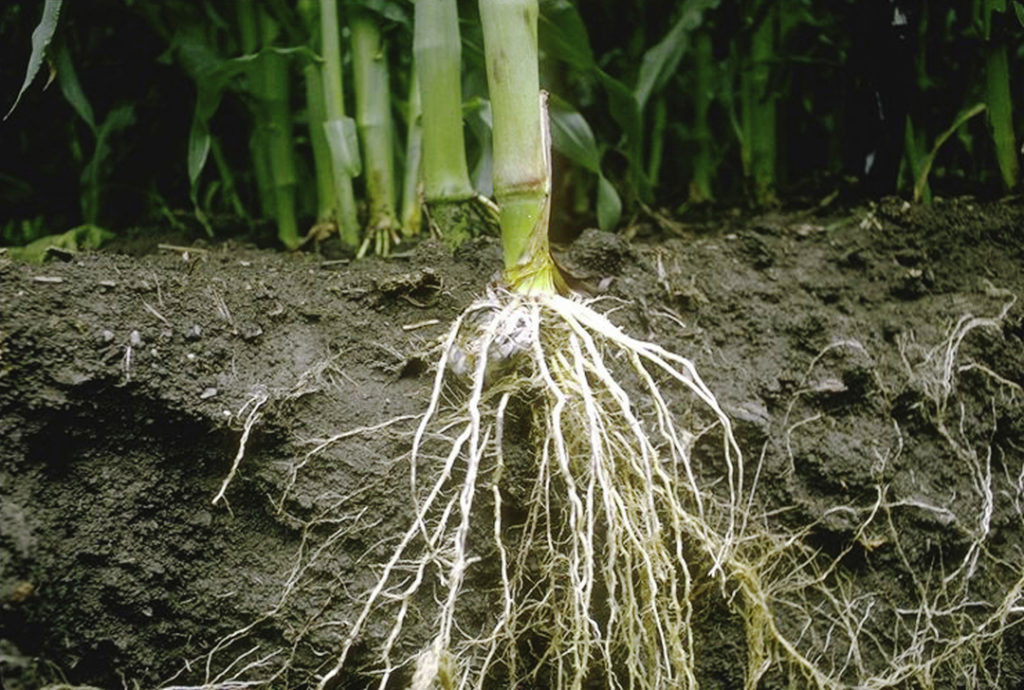Iowa is known for having some of the most fertile soils in the world, leading the state to be one of the most agriculturally productive in the U.S. So, what types of soils does the state of Iowa have, and how does each soil type affect farming? In total, there are more than 450 soil subtypes found throughout Iowa. Each one of those subtypes belongs to a higher order of soil. The USDA aggregates these soil types into 12 different orders: Alfisols, Andisols, Aridisols, Entisols, Gelisols, Histosols, Inceptisols, Mollisols, Oxisols, Spodosols, Ultisols, and Vertisols.
Iowa has six of the twelve orders: Alfisols, Entisols, Histosols, Inceptisols, Mollisols, and Vertisols. Let’s take a deep dive into each of these orders, learning about their distribution and influence on agriculture in the state.
Mollisols
Accounting for 67.73% of the state’s total acres, Mollisols soil is the most common order. Also called black soil, this soil is fertile and usually contains minerals such as calcium (Ca), magnesium (Mg), and potassium (K). Due to its thick dark surface layer full of nutrients, Mollisols are heavily farmed and produce high-yielding crops.
Alfisols
Commonly found in the northeastern, south-central, and southeastern parts of Iowa, Alfisols soils are the second most prevalent order in the state (blanketing 20% of the total acres of Iowan land). This soil is also fertile and used for farming purposes such as supporting the cultivation of row crops. The surface layer of soil, usually light gray or brown, has less clay than the subsoil. These soils are usually moist during the summer but may dry during occasional droughts.
Entisols
One of the least common soil orders found in the state, Entisols account for nearly 7% of the total acres in Iowa. These soils are usually developed in recent river bottom alluvium and sandy soils where the parent materials typically consist of weather-resistant quartz. These soils are also common in hillier topography. Soil properties change very little with depth due to insufficient time or weather-resistant material and lack a definitive horizon (soil layering). These soils are more commonly found supporting livestock as pasture ground.
Histosols
At 0.20% distribution, Histosols are generally found in the north-central part of the state. Histosols, or organic soils, have also been giving the term of peat and muck. Farming in Histosols soils can be challenging to manage and require proper drainage and tiling.
Inceptisols
With Inceptisols covering just 2.56% of the land in Iowa, this order is only found in a few areas throughout the state; a majority can be found in the western part of the state. The soils’ properties change with depth but have little clay, aluminum, or iron oxide, or humus in them. These soils are considered to be young soils and have minimal horizon development. Field crops can be cultivated on this type of soil.
Vertisols
Vertisols are a type of mineral soil that consists of more than 30% clay. During some parts of the year, the clay soils can develop deep and wide cracks, making it vulnerable to droughts. If there is proper moisture, this soil can support farming. They are commonly found in south-central Iowa. Vertisols only cover about 0.01% of the state, making it one of the least prevalent soils.
Find Out What Your Soil Is Capable Of!
No matter what type of soil you have, E4 Crop Intelligence has the soil sampling services and unbiased, independent expertise to help growers make the right decisions for their field and crops. E4 visits your field and meticulously collects core samples precisely and uniformly using GPS coordinates and unique sample ID methodology. Those cores are sent to an approved lab for analysis and delivered directly to E4’s proprietary software, where growers can use the data to inform their next decision. To learn more about soil and E4’s soil sampling services, visit E4CropIntelligence.com.

